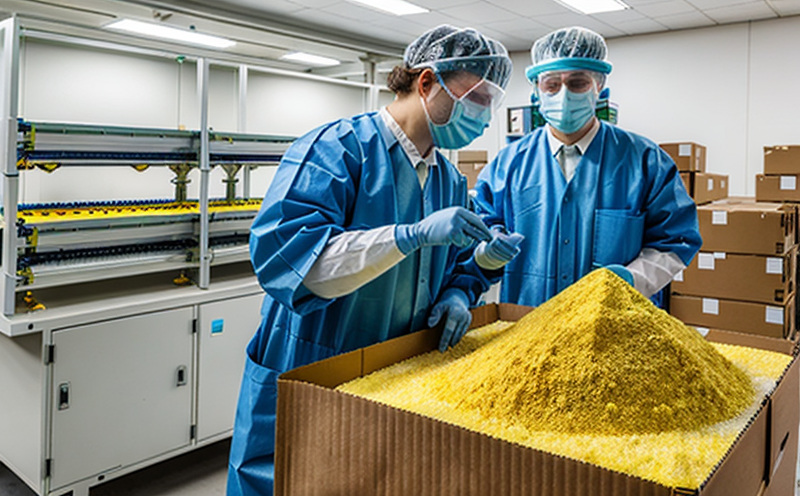Testing the migration of particles from the packaging material into the drug formulation
The Critical Role of Testing Migration in Ensuring Pharmaceutical Product Safety A Laboratory Service Provided by Eurolab
In the pharmaceutical industry, ensuring the safety and efficacy of products is paramount. One critical aspect that often goes overlooked is the potential migration of particles from packaging materials into drug formulations. This phenomenon can have far-reaching consequences, including contamination, damage to product integrity, and even patient harm. As a result, testing for particle migration has become an essential laboratory service in the industry.
At Eurolab, we understand the importance of this critical quality control measure and are proud to offer our expertise in testing the migration of particles from packaging materials into drug formulations. In this article, we will delve into the world of particle migration testing, highlighting its significance, benefits, and key advantages. Whether youre a pharmaceutical manufacturer, a regulatory agency, or an industry expert, this information is essential for ensuring the safety and quality of your products.
The Risks Associated with Particle Migration
Particle migration refers to the transfer of particles from packaging materials into drug formulations during storage, transportation, or handling. This can occur through various means, including
Leaching The movement of particles from packaging materials into the drug solution due to solubilization.
Absorption The uptake of particles by the packaging material, which can then be transferred into the product.
The consequences of particle migration can be severe and far-reaching, including
Contamination Particles can introduce impurities into the product, compromising its safety and efficacy.
Damage to product integrity Particle migration can affect the products appearance, texture, or consistency, leading to quality issues.
Patient harm In extreme cases, particle migration can lead to adverse reactions, allergic responses, or even toxic effects.
The Benefits of Testing for Particle Migration
In light of these risks, testing for particle migration is a critical aspect of pharmaceutical quality control. The benefits of this laboratory service are numerous and well-documented
Ensures product safety By detecting potential contaminants, you can prevent patient harm and maintain product integrity.
Meets regulatory requirements Particle migration testing is often mandated by regulatory agencies to ensure compliance with industry standards.
Protects brand reputation Demonstrating a commitment to quality control can enhance your companys image and reputation in the market.
Optimizes packaging materials By understanding which materials are safe for use, you can reduce costs associated with material waste and minimize the risk of particle migration.
Key Benefits of Eurolabs Particle Migration Testing Service
At Eurolab, our team of experts utilizes cutting-edge technology and industry-best practices to deliver accurate and reliable results. Some key benefits of our service include
Comprehensive testing We offer a range of analytical techniques to detect particles in packaging materials, including HPLC, GC-MS, and ICP-MS.
Flexible sampling protocols Our flexible approach allows for various sample types and sizes, accommodating diverse product lines and production processes.
Rapid turnaround times We understand the importance of speed in pharmaceutical quality control, providing timely results to ensure minimal disruption to your operations.
QA Frequently Asked Questions about Particle Migration Testing
What is particle migration testing?
Particle migration testing involves analyzing packaging materials for potential contaminants that can be transferred into drug formulations.
Why is particle migration testing essential in the pharmaceutical industry?
This laboratory service ensures product safety, meets regulatory requirements, and protects brand reputation by detecting potential contaminants.
What types of packaging materials are tested for particle migration?
Various materials, including plastics, metals, and paper-based products, can be analyzed to detect potential particles.
How is particle migration testing performed at Eurolab?
Our team utilizes advanced analytical techniques, such as HPLC, GC-MS, and ICP-MS, to detect particles in packaging materials.
Conclusion
In the ever-evolving world of pharmaceuticals, ensuring product safety and quality control is paramount. Particle migration testing plays a critical role in this endeavor, detecting potential contaminants that can compromise product integrity and patient safety. At Eurolab, our expertise in particle migration testing ensures that your products meet industry standards and regulatory requirements. By partnering with us, you can maintain a strong reputation, optimize packaging materials, and protect your customers from harm.
To learn more about our laboratory services or to discuss specific needs, contact us today.




